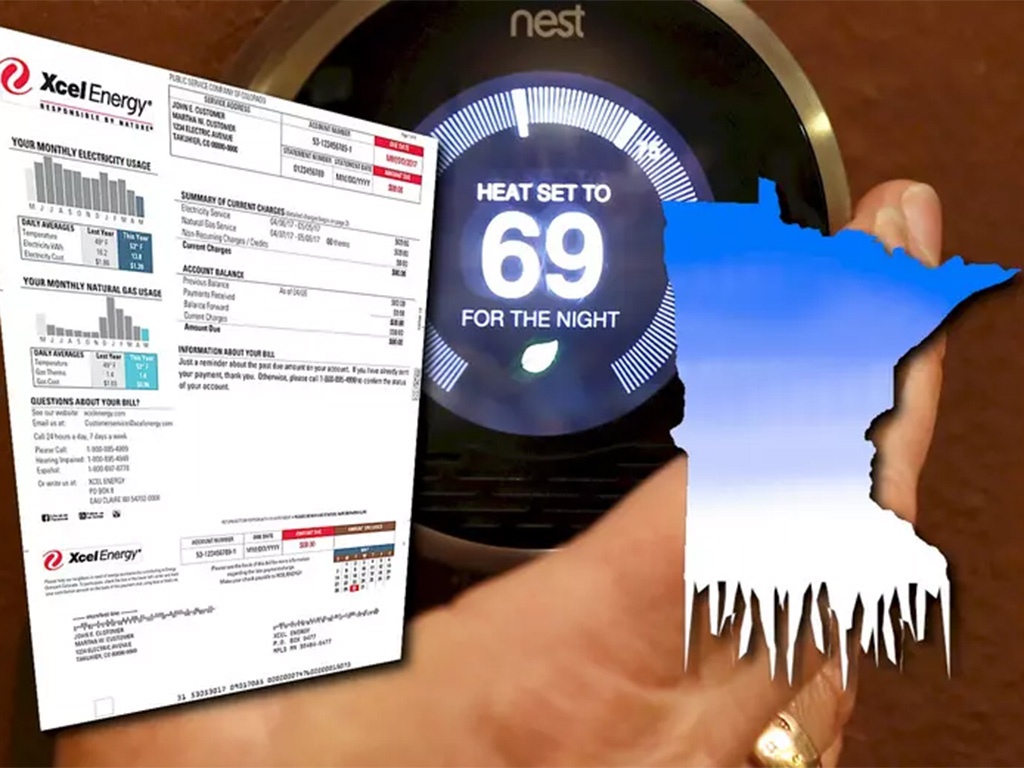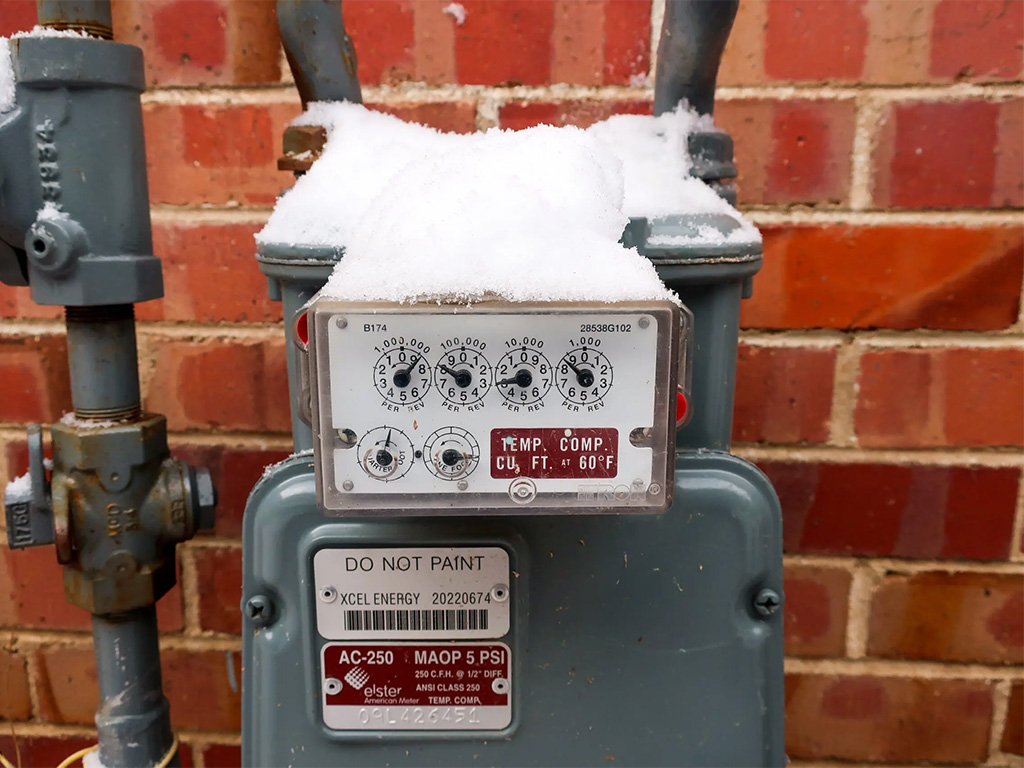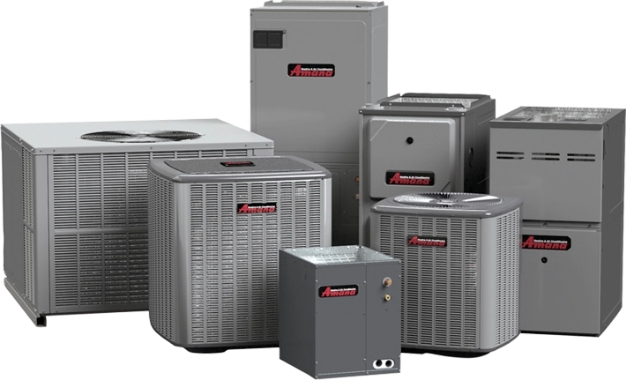Why Heating Bills Spike in February: Colorado’s Winter Impact
Table of Contents
As winter settles in and temperatures drop, many homeowners in Colorado find their heating bills climbing significantly, particularly in February. Understanding the climatic factors contributing to these rising costs is essential for effective budgeting and energy management. One of the primary reasons for this spike is the state’s unique weather patterns. Colorado experiences dramatic temperature fluctuations, and February often serves as the peak of winter’s chill, bringing with it prolonged cold spells that require homes to use their heating systems more intensively.

In addition to these low temperatures, Colorado’s elevation and geographical features contribute to the harsh winter climate. The state is known for its dry air and low humidity, which can exacerbate the feeling of cold and increase reliance on heating systems. Many homeowners underestimate how much energy is consumed when maintaining a comfortable indoor environment during frigid days. Furthermore, winter storms can lead to inconsistent power supply, forcing homeowners to compensate by relying more heavily on auxiliary heating sources.
It’s also important to consider that energy prices fluctuate based on external factors, such as natural gas costs and demand during peak usage times. February often represents a period of increased energy consumption across the region, as the coldest weeks of the year can coincide with higher energy prices. This means that, alongside the climatic factors, economic influences also play a crucial role in why your heating bills spike in February in Colorado. With proper planning and awareness of these elements, homeowners can better prepare for the rising costs and potentially find ways to minimize their impact.
Finally, taking proactive steps can also help mitigate these costs. Simple actions such as improving insulation, sealing drafts, and utilizing programmable thermostats can reduce heating expenses. By understanding the interplay between climate, energy economics, and home maintenance strategies, residents can navigate the challenges of winter heating bills more effectively, ensuring warmth and comfort without the surprise of exorbitant expenses come spring.
The reasons behind these rising costs and offer insights on managing your heating expenses as winter progresses.
Understanding the Climatic Factors Leading to Higher Heating Costs
Residents in Colorado often brace themselves for the inevitable rise in heating costs. Many ask, “Why do your heating bills spike in February in Colorado?” The answer lies in a combination of climatic factors that converge during this time of year, creating conditions that demand increased energy usage for home heating.

February is characterized by its cold temperatures, which often reach their annual lows. Cold snaps, frequently influenced by the polar vortex, can push temperatures down drastically, leading to higher energy demand. In addition to these frigid conditions, Colorado experiences significant altitude, which can lead to rapidly changing weather patterns and increased heating losses in homes. Poorly insulated buildings or those not equipped to handle such drops in temperature can see a dramatic surge in their heating bills.
Moreover, February tends to be a month with less sunlight, further exacerbating heating demands. Shorter days and longer nights mean heating systems must work overtime to maintain a comfortable indoor environment. This extended use can lead to overheated systems for some households, which may also contribute to elevated costs on energy bills. Homeowners may find that their existing heating solutions are not sufficiently tailored to handle the specific climatic challenges of Colorado’s winter.
Ultimately, understanding the climatic factors that lead to higher heating costs can empower residents to take proactive measures. Simple adjustments, such as improving insulation, sealing drafts, and scheduling regular maintenance for heating systems, can help mitigate some of the impacts of these winter challenges. Homeowners can better manage their energy consumption and finances during the most demanding months of the year by being aware of the reasons behind the spike in heating bills.
Energy Consumption Trends in Colorado During the Winter Months
As winter blankets Colorado in its chilly embrace, many residents experience a familiar pattern in their energy consumption. The state’s unique geography, characterized by its high altitude and variable weather conditions, significantly impacts energy usage. During the coldest months, especially February, heating systems are pushed to their limits to combat the dropping temperatures. This increased demand for energy is a key factor in why your heating bills spike in February in Colorado. As families gather indoors to escape the cold, energy consumption soars, often increasing monthly utility expenses.
Moreover, the type of heating system used in homes plays a substantial role in overall energy consumption trends. Many Colorado households rely on electric or gas heating, which can be particularly expensive during peak usage. Homeowners often adjust their thermostats more frequently as the cold sets in, leading to inefficient heating and costs. Additionally, fluctuations in natural gas prices can compound the situation, making February a particularly challenging month for budgeting energy expenses.

Interestingly, energy consumption practices vary between urban and rural areas in Colorado. While urban centers may have more access to centralized energy resources and infrastructure, rural residents often depend on heating oil or propane, leading to higher transportation costs and increased bills during winter. Furthermore, remote working has led to changes in energy usage patterns, with more people at home during the day, adding pressure to household energy needs. This shift means that many residents struggle with high heating costs and the challenge of managing their overall energy consumption efficiently.
Understanding these trends is crucial for Coloradans looking to mitigate their winter energy expenses. By educating themselves about their heating systems and implementing strategies to conserve energy, such as better insulation and programmable thermostats, individuals can take proactive steps to ease the financial burden. As winter approaches, awareness of these energy consumption trends can empower residents to make informed choices that reduce their bills and promote a more sustainable energy use.
Tips to Efficiently Manage and Reduce Your February Heating Bills
In February, many residents in Colorado experienced a familiar phenomenon: a sharp increase in heating bills. Understanding why your heating bills spike in February can help you take steps to manage those costs more effectively. The combination of dropping temperatures, increased reliance on heating systems, and potentially outdated insulation can strain your wallet this month. To combat this, adopting some energy-saving techniques that can significantly reduce your monthly bills is essential.
Maintaining your heating system is one of the most straightforward yet efficient strategies. Regular maintenance, such as changing filters and scheduling annual inspections, can greatly improve your furnace’s efficiency. A well-maintained heating system operates more effectively, using less energy to heat your home. Additionally, ensure that your thermostat is set to an optimal temperature. Lowering it by just a couple of degrees can create noticeable savings, especially when you’re mindful of making adjustments at night or when you’re away from home.
Another crucial aspect involves evaluating your home’s insulation. If your home is poorly insulated, you may lose substantial heat, leading to over-reliance on your heating systems. Check areas like windows, doors, and attics for drafts and invest in weather stripping or insulation if necessary. Small upgrades, such as using insulated curtains or sealing gaps, can make a remarkable difference. These efforts not only enhance comfort but also work towards keeping those heating bills in check throughout the colder months.
Lastly, consider incorporating heating alternatives into your routine. Utilizing space heaters for specific rooms can allow for lower temperatures in unused areas, and layering clothing can also help you stay warm without cranking up the thermostat. Embracing these strategies can help you navigate February’s chilly climate without breaking the bank. Implementing these practical tips allows you to effectively manage and reduce your heating bills while ensuring your home remains cozy despite the cold.
The Role of Insulation in Controlling Winter Energy Expenses
Insulation is a barrier, preventing the loss of heated air during the cold winter months. If your home is poorly insulated, warm air escapes through walls, attics, and unsealed spaces, forcing your heating system to work overtime to compensate for the heat loss. This increased demand on your heating system elevates your energy bills and can lead to wear and tear on your equipment, resulting in costly repairs. On the other hand, properly insulated homes retain heat more effectively, allowing homeowners to regulate their indoor temperatures with minimal energy expenditure.
In Colorado, where winters can be particularly harsh, understanding the impact of insulation becomes even more crucial. Homes that lack adequate insulation might see costs soaring in February as the latter part of winter typically represents the coldest stretch of the season. With persistent chilly weather outside, the heating system has to battle against the bitter cold, driving up electricity or gas usage. Using thermal insulation materials such as spray foam, fiberglass, or cellulose in key areas like attics, basements, and exterior walls can significantly improve energy efficiency and combat those rising bills.
Investing in quality insulation is not merely a seasonal remedy; it is a long-term solution that pays off year after year. Homeowners are encouraged to conduct regular insulation assessments and address any deficiencies before the winter chill settles in. By prioritizing insulation, you not only contribute to a more sustainable environment but can also enjoy the peace of mind that comes with knowing you are managing your winter energy expenses efficiently. As awareness about energy conservation grows, now is the perfect time to consider the crucial role insulation plays in creating a comfortable, energy-efficient home.
Weatherproofing Your Home: A Key Strategy for Lower Heating Costs
Why Your Heating Bills Spike in February in Colorado can often be traced back to several factors, including chilly temperatures and intense storms that can last weeks; weatherproofing your home can significantly mitigate these rising costs. Simple improvements, such as sealing drafts around windows and doors, can prevent warm air from escaping, ultimately keeping your living space cozy while reducing overall energy use.
Another crucial aspect of weatherproofing is insulation. Proper insulation in your attic and walls helps maintain a stable indoor temperature, reducing the workload on your heating system. By ensuring your insulation is up to current standards, you can keep the heat from dissipating, making your home more energy-efficient. It’s also worth considering insulated or storm windows, which can help you maintain warmth during those frigid Colorado nights while deflecting the biting cold that seems to seep in through the standard glass.
Additionally, maintenance plays a significant role in weatherproofing your home. Regularly checking and servicing your heating system can improve efficiency, which helps lower your monthly bills. Changing your furnace filter periodically is crucial, as a clean filter maintains optimal airflow and promotes better performance. In tandem with seasonal maintenance, homeowners should also inspect their HVAC ducts for leaks, as these can account for significant heat loss if not addressed.
Lastly, consider upgrading to a programmable thermostat. This allows you to set your heating schedule according to your lifestyle, ensuring you’re not heating your home when it’s empty. By combining these strategies, you can effectively tackle that painful spike in heating costs during the peak of winter. Weatherproofing isn’t just a seasonal task; it’s a key investment in creating a more energy-efficient home that will protect your wallet for years.
Exploring Alternative Heating Solutions for Winter Savings
Understanding why your heating bills spike in February in Colorado can help you prepare and explore alternative heating solutions that offer comfort and savings. By rethinking how you heat your home, you can reduce reliance on traditional heating systems and potentially save money throughout the season.
One potential solution to reducing heating costs is using alternative heating methods, such as space heaters or wood-burning stoves. These options allow homeowners to heat only their areas rather than the entire house. Portable electric heaters can be effective for smaller spaces, while a wood-burning stove can provide a cozy atmosphere and reduce dependence on gas or electric systems. Additionally, recognizing the benefits of programmable thermostats can make a substantial difference in optimizing energy use and maintaining a comfortable environment without excessive costs.
Another avenue worth exploring is investing in renewable energy sources, such as solar heating systems. While the initial investment may be higher, solar panels can significantly decrease long-term heating expenses and provide energy independence. Many Colorado homes benefit from sunshine during winter, allowing them to capitalize on this eco-friendly alternative. Furthermore, government incentives and tax credits for renewable energy installations can ease the financial burden and promote a more sustainable lifestyle.
Thinking creatively about heating solutions is essential as winter progresses and temperatures drop. By examining alternative methods and taking proactive measures, homeowners can combat the high costs of February’s chilly temperatures. This winter, consider adapting your heating strategy to ensure a warm home without breaking the bank, paving the way for a more cost-effective and energy-efficient future.
Leveraging Smart Thermostat Technology for Energy Efficiency
Smart thermostat technology has revolutionized how we manage our home’s heating and cooling systems, particularly in regions with extreme seasonal changes like Colorado. As winter sets in and temperatures plummet, homeowners often experience a daunting increase in heating bills. Understanding why your heating bills spike in February in Colorado can highlight the importance of optimizing your home temperature through innovative technology. Integrating a smart thermostat into your heating system allows you to gain greater control over temperature settings, reducing energy consumption and overall costs.
These devices use sophisticated algorithms and machine-learning capabilities to monitor daily routines and preferences. By learning when you’re home or away, a smart thermostat can adjust the temperature accordingly, ensuring you’re not heating an empty house. This contributes to energy savings and provides a more comfortable environment when you are home. For instance, you can mitigate the unwelcome surprises of inflated energy bills by programming your thermostat to lower the temperature during peak winter months when you’re typically out of the house.
Moreover, many smart thermostats come with energy usage reports, giving homeowners valuable insights into their heating patterns and costs. This data can help identify areas for improvement and further refine temperature settings, ensuring optimal efficiency. Additionally, features like remote access enable you to control your heating system from anywhere, allowing you to make adjustments on the go and pre-heat your home before you arrive. This level of flexibility ensures that energy waste is minimized, particularly during the cold February months when heating demands are at their highest.
Incorporating smart thermostat technology is an effective strategy to counteract the seasonal spike in heating bills and foster a more sustainable energy usage routine. By pairing convenience with energy efficiency, you can create a home environment that is both comfortable and eco-friendly. As you prepare for the bitter cold of winter, consider the long-term benefits of upgrading to a smart thermostat and take control of your heating expenses during the peak cold months in Colorado.
How to Conduct a Home Energy Audit to Identify Cost-Saving Opportunities
Conducting a home energy audit can reveal significant cost-saving opportunities and enhance the comfort of your living space. With energy prices consistently rising, understanding how and where energy is wasted in your home is more important than ever. A thorough audit can pinpoint inefficiencies in your heating and cooling systems, insulation, and appliances, allowing homeowners to make informed decisions about upgrades or repairs. It’s a proactive approach to managing energy use and can lead to substantial savings in the long run.
One common issue many Colorado residents face is why their heating bills spike in February. The coldest month of the year often catches homeowners off guard, as inefficient systems struggle to maintain comfortable temperatures while driving up bills. A home energy audit can help identify the culprits behind these surges. For example, inadequate insulation in the attic or walls may allow precious heat to escape, while gaps around windows and doors can lead to drafts that your furnace must work harder to counteract. Addressing these issues can lead to a more efficient system that uses less energy, thus reducing costs.
To start your energy audit, you can either hire a professional auditor or conduct a DIY version. Begin by walking through each room, making note of any noticeable drafts, outdated appliances, or inefficient light bulbs. Pay close attention to seals around windows and doors, and inspect your heating system for maintenance requirements. It’s also worthwhile to assess your thermostat settings, ensuring they are optimized for energy savings when you are away from home or asleep. Each of these components plays a crucial role in your overall energy consumption.
After you’ve compiled your findings, prioritize which issues are most pressing and that would provide the highest return on investment. Simple measures such as sealing gaps, upgrading to energy-efficient lighting, or adding insulation can make a substantial difference. Moreover, consider taking advantage of local utility incentives, which can often help offset the costs of improvements. Regular audits and a commitment to improving your home’s energy efficiency allow you to enjoy a more comfortable space while keeping your heating bills in check, especially during those frigid February days in Colorado.
Community Resources and Programs for Energy Assistance in Colorado
In Colorado, winter can be a challenging time, particularly when it comes to managing rising energy costs. Many residents ask, “Why do your heating bills spike in February in Colorado?” The answer lies in several factors, including cold weather trends, increased energy consumption during peak times, and heating systems needing to work harder as temperatures drop significantly. Understanding these dynamics is essential for residents seeking relief in the chilly months ahead.
Fortunately, numerous community resources and programs in Colorado are available to assist those struggling to afford their heating expenses. The Low-Income Energy Assistance Program (LEAP) is a key initiative that provides financial support to eligible households. LEAP offers a one-time payment to help cover winter heating costs based on household size, income, and energy type. In addition, many local organizations, such as the Salvation Army and Energy Outreach Colorado, offer emergency assistance and advocacy services, ensuring that families access the help they need to keep their homes warm.
Beyond immediate financial support, numerous educational programs and workshops empower Colorado residents to make energy-efficient choices year-round. From weatherization assistance to energy audits, these programs help households understand how to reduce consumption and lower bills. Many community initiatives also provide information about renewable energy options, offering residents sustainable alternatives that can further decrease dependency on traditional heating sources.
As winter progresses and the energy demands increase, it is crucial for Coloradans to take advantage of these resources. By reaching out for assistance and exploring available programs, residents can better navigate the financial strains caused by harsh winter conditions. Whether you’re seeking immediate support to manage high heating bills or looking for long-term solutions to lower your energy consumption, Colorado’s community resources and programs are here to help.
Budgeting and Planning for February’s Spike in Heating Bills
One primary reason for the increase in heating costs is that February generally brings more consistent cold weather compared to earlier winter months. Families crank up their thermostats to maintain a comfortable indoor environment, leading to increased gas or electricity consumption. Additionally, many households may have underestimated their heating needs for the month, resulting in a need for additional energy usage to keep homes warm. Understanding this pattern can help residents prepare their budgets more accurately and avoid surprises when bills arrive.
Another aspect to consider is the fluctuating energy prices that can exacerbate heating costs in February. Utility companies may adjust their rates due to higher demand during peak usage, leading to steep bills if homeowners are unprepared. To combat this, establishing a monthly budget that accounts for potential increases and setting aside funds for heating expenses can be beneficial. Moreover, monitoring energy consumption throughout the month and being mindful of usage can help residents gain better control over their heating costs.
Planning for February’s heating bills means making strategic decisions in advance. Consider scheduling regular maintenance for heating systems to ensure they function at peak efficiency, which can help reduce energy consumption. Additionally, residents can implement energy-saving practices such as weatherproofing windows and doors, using programmable thermostats, or investing in better insulation. By being proactive about budgeting and making these preparations, homeowners in Colorado can face February’s spike in heating bills with confidence and ease, ultimately easing the financial burden during one of the coldest months of the year.
Why do pipes freeze in cold weather?
Pipes freeze when temperatures drop below 32°F, causing the water inside to turn into ice, expand, and increase pressure, which can lead to pipe bursts. Poor insulation and unheated areas increase the risk.
How can I prevent my pipes from freezing?
To prevent frozen pipes, insulate exposed pipes, keep indoor temperatures above 55°F, let faucets drip during extreme cold, and open cabinet doors under sinks to allow warm air circulation.
What should I do if my pipes freeze?
If your pipes freeze, turn off the main water supply, open the affected faucet, and use a hair dryer or heating pad to slowly thaw the pipe. Avoid using open flames, as they can cause damage or fire hazards.
How do I know if my HVAC system is at risk of breaking down in winter?
Signs of potential HVAC failure include inconsistent heating, strange noises, increased energy bills, and short cycling. Regular maintenance can help prevent unexpected breakdowns.
How can I prevent my furnace from failing during extreme cold?
Schedule annual furnace maintenance, regularly replace air filters, keep vents unblocked, and ensure your thermostat works properly. A professional HVAC inspection before winter can also help detect potential issues.
Is it a good idea to use space heaters to prevent frozen pipes?
Space heaters can be effective for preventing frozen pipes in unheated areas but should be used safely. Keep them away from flammable materials, never leave them unattended, and ensure they have auto shut-off features.
How can I keep my outdoor HVAC unit from freezing?
Cover the unit with an HVAC-approved cover when not in use, clear snow and ice buildup, and ensure proper drainage to prevent ice formation.
Can a smart thermostat help prevent HVAC breakdowns?
Yes, a smart thermostat can optimize heating efficiency, detect temperature drops, and alert you to potential HVAC issues before they become major problems.
What should I do if my furnace stops working in freezing temperatures?
Check the thermostat, replace the filter, and ensure the circuit breaker hasn’t tripped. Call an HVAC professional immediately to prevent further damage and maintain home safety if the issue persists.
Should I leave my heat on if I’m away during winter?
Yes, set your thermostat to at least 55°F to keep pipes from freezing and prevent costly repairs. Smart thermostats allow remote monitoring and adjustments while you’re away.










